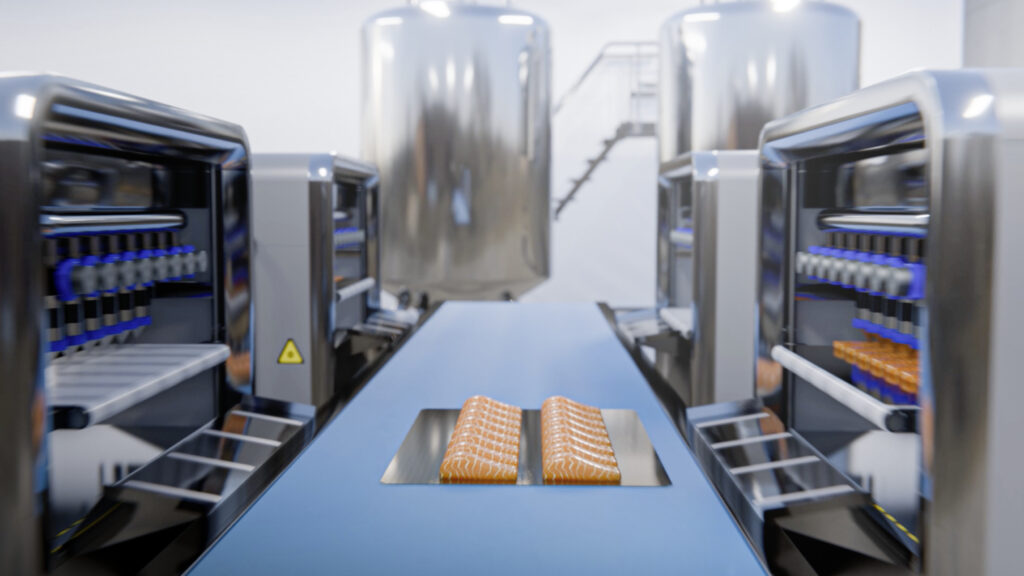One of the major challenges facing 3D printed food is its scalability in comparison to traditional food production. The 3D printing industry generally specializes in creating small items. It can produce tens of millions of hearing aids, hundreds of millions of invisible aligner molds, and tens of millions of dental bridges and crowns annually. However, these items are all relatively small.
Contrast this with the food industry, where the consumption volumes are staggeringly high. Consider the billions of hamburgers consumed each year. To put it in perspective, over 200 million chickens, 3.8 million pigs, 12 million ducks, and 900,000 cows are slaughtered daily for food. To meaningfully replace meat consumption, 3D printing of food would need to scale up massively, potentially to the extent of producing a million tonnes per day. This presents a formidable challenge for the emerging manufactured meat industry, which must contend with not only technological and logistical hurdles but also the sheer scale of demand.
So, it’s indeed promising to hear that the Austrian startup Revo Foods is planning to increase its production capabilities. The company is set to implement a multi-nozzle system, a significant step forward in its production process. Revo Foods has already made strides in creating salmon fillets using the Revo FFX1 and is now looking to advance further with the Revo Food Fabricator.
The company has two patents for a new extruder system. This system is specifically optimized for plant-based materials to be continuously extruded and then combined with fat. Moreover, Revo Foods’ collaboration with Mycorena has led to an enhancement in the mycoprotein, making it more suitable for large-scale production. Revo’s salmon filet has a Nutriscore rating of ‘A’, indicating a high nutritional value.
The company claims that this development will pave the way for mass customization in food production, enabling the creation of novel “structures, shapes, or textures” on a large scale. By customizing textures and incorporating fats with plant-based proteins, Revo aims to produce appealing alternatives to meat and fish.
“3D food printing on an industrial level allows us to change the way we think about food. Products that were previously very exclusive and more likely to be found in gourmet restaurants can now be produced on a large scale. I am excited about the new creative opportunities that open up to food product developers with the help of this technology,” said Revo Foods CEO Robin Simsa.
To finance its expansion, the company plans to raise new capital from January 18 to April 18, 2024. In a previous public funding round, Revo secured €435,000. Currently, its goal is to raise €1.5 million, valuing the company at €15 million. To date, over €500,000 has been contributed by 101 investors. The startup is now targeting a broader investment through the FunderNation platform, operated by Triangle Investments. Notably, investments on this platform can start from as low as €100.
The company aims, by Q3 of this year, to operate eight production lines capable of producing eight tonnes per month. From this, Revo anticipates generating revenue of €135,000. With a price of €16 per kilo, this undercuts the retail cost of regular salmon, which is typically around €23 per kilo in European supermarkets. Currently, Revo has 20 distributors, who are likely to supply both restaurants and supermarkets. The eventual consumer price remains to be seen. If the company achieves the proposed volumes and pricing, direct-to-consumer sales could be more viable. This approach of owning the customer relationship might lead to earlier profitability and greater market influence. However, dealing with supermarkets may involve price pressures. Given that the product is entirely made from fungi, shipping might pose fewer challenges than with regular fish. Still, to emphasize its premium quality and compete directly with the fish they aim to replace, positioning the product in the refrigerator section of supermarkets could be a strategic choice.
The opportunity for 3D food printing is immense, particularly as awareness grows about environmental destruction and the desire for ethical, responsible food options increases. Concurrently, many fish species are nearing extinction, leading to potential unavailability and rising prices for fish. Specifically, 3D printing salmon cost-effectively represents a significant business opportunity. Norwegian salmon exports have been experiencing a 14% annual growth over the past decade, with salmon prices averaging around $9.69 per kilo. At this price point, Revo’s product may not undercut the cost of wild or farmed salmon. However, the company could capitalize significantly on the ethical angle of its product. Achieving a competitive selling price would unlock true market volume. The raw salmon market is valued between $14 to $30 billion, depending on definitions. Incorporating ethical considerations, Revo could be positioned for substantial growth, provided the firm can successfully operationalize its concept.
Subscribe to Our Email Newsletter
Stay up-to-date on all the latest news from the 3D printing industry and receive information and offers from third party vendors.





